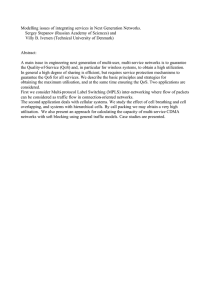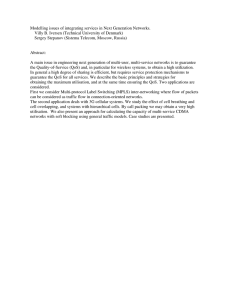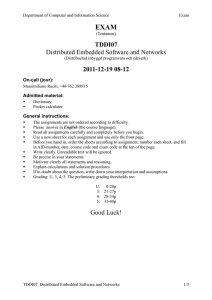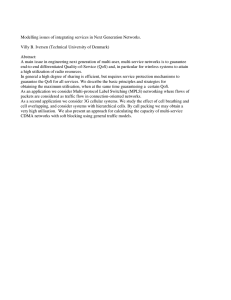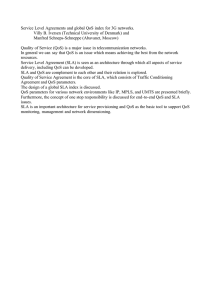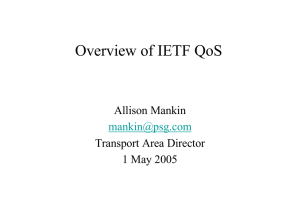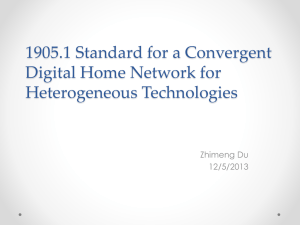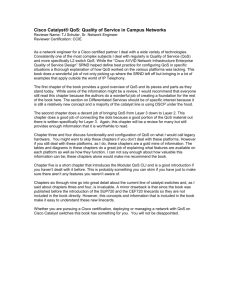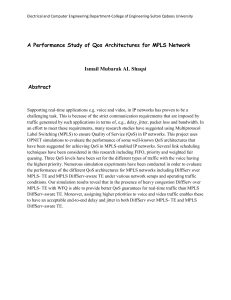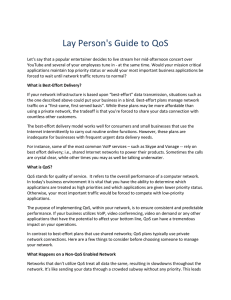The system shall support an arbitrary set variety of traffic classes that
advertisement
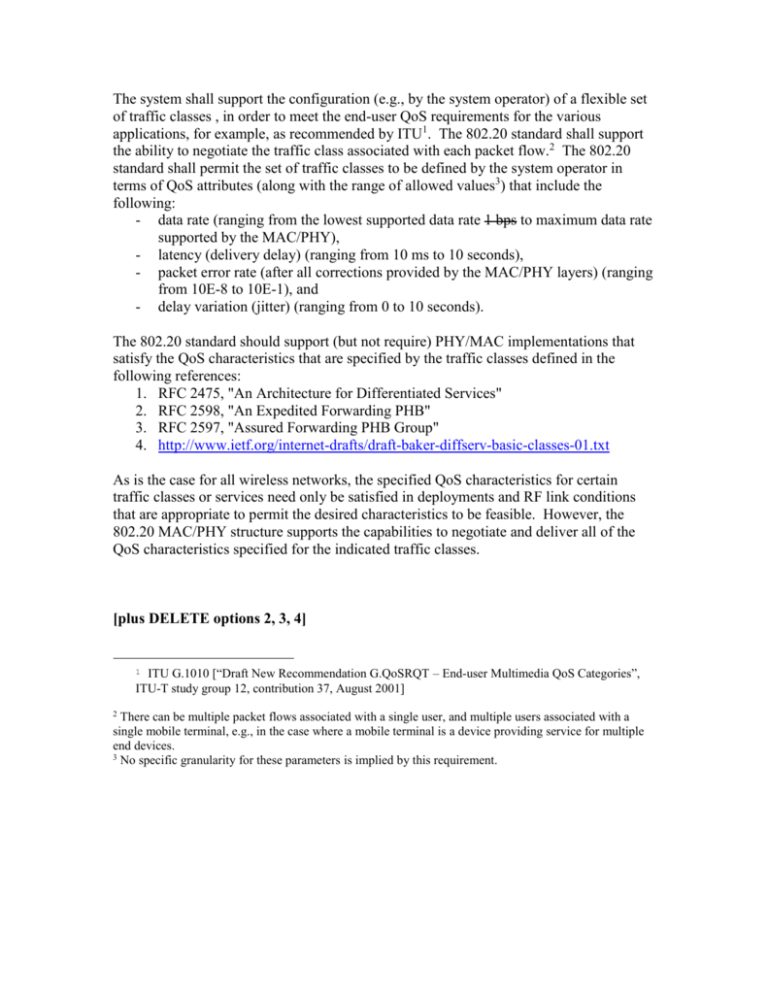
The system shall support the configuration (e.g., by the system operator) of a flexible set of traffic classes , in order to meet the end-user QoS requirements for the various applications, for example, as recommended by ITU1. The 802.20 standard shall support the ability to negotiate the traffic class associated with each packet flow.2 The 802.20 standard shall permit the set of traffic classes to be defined by the system operator in terms of QoS attributes (along with the range of allowed values3) that include the following: - data rate (ranging from the lowest supported data rate 1 bps to maximum data rate supported by the MAC/PHY), - latency (delivery delay) (ranging from 10 ms to 10 seconds), - packet error rate (after all corrections provided by the MAC/PHY layers) (ranging from 10E-8 to 10E-1), and - delay variation (jitter) (ranging from 0 to 10 seconds). The 802.20 standard should support (but not require) PHY/MAC implementations that satisfy the QoS characteristics that are specified by the traffic classes defined in the following references: 1. RFC 2475, "An Architecture for Differentiated Services" 2. RFC 2598, "An Expedited Forwarding PHB" 3. RFC 2597, "Assured Forwarding PHB Group" 4. http://www.ietf.org/internet-drafts/draft-baker-diffserv-basic-classes-01.txt As is the case for all wireless networks, the specified QoS characteristics for certain traffic classes or services need only be satisfied in deployments and RF link conditions that are appropriate to permit the desired characteristics to be feasible. However, the 802.20 MAC/PHY structure supports the capabilities to negotiate and deliver all of the QoS characteristics specified for the indicated traffic classes. [plus DELETE options 2, 3, 4] ITU G.1010 [“Draft New Recommendation G.QoSRQT – End-user Multimedia QoS Categories”, ITU-T study group 12, contribution 37, August 2001] 1 2 There can be multiple packet flows associated with a single user, and multiple users associated with a single mobile terminal, e.g., in the case where a mobile terminal is a device providing service for multiple end devices. 3 No specific granularity for these parameters is implied by this requirement.
